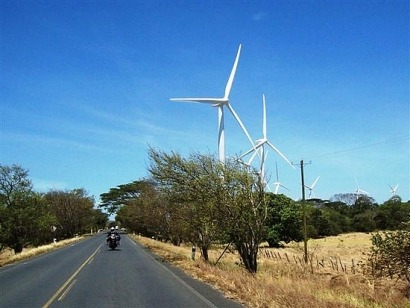
In February 2010 a meteo tower was installed in Bolivia to collect data confirming the existence of sufficient wind energy to warrant a wind farm. Now, with feasibility and energy output optimisation studies complete, and modelling of the wind farm design finalised, Bolivia is preparing to commission its first wind farm in 2013.
The 2.5-MW wind project will be launched in Qollpana, Pocona municipality in Cochabamba, at 2,700 metres above sea level.
The State owned electric utility, Corani, is taking a lead on rolling out wind energy in South America's latest country to move into wind production, which it expects will create jobs, diversify the energy mix, and increase power generation.
Now, terms of reference for the acquisition, transportation, erection and commissioning of the wind turbines and ancillary components are being prepared. The Latin American Wind Energy Association (LATWEA) reports that Corani expects to launch the tender for the wind project before the end of this year.
Wind energy keeps energy prices low
Elsewhere on the continent, Nicaragua has released data suggesting that electricity generated by its growing wind industry is helping to keep wholesale electricity prices down.
“The [price] increases experienced by the oil that is sold in the Gulf of Mexico market and the market in Venezuela, have not yet impacted the country's generating system, which keeps generating average cost [sic] below $170,” explains LATWEA.
The wind association says that according to Nicaragua’s National Load Dispatch Centre (CNDC), increased wind energy output is having a dampening effect on power prices on the national electricity market, keeping them down at an average of $167 per MWh.
The CNDC reports that output from the country’s hydropower plants remains stable, while thermal plant production using long bunker fuels remained dominant in the national electricity market (accounting for around 75% of total installed capacity), but that increasing wind output is helping to create a cheaper energy mix.
By way of example, Amayo wind Consortium SA produces electricity on its wind farms at just $92 per MWh. While this figure is some way off the $62 per MWh achieved by the Carlos Fonseca and Central America hydroelectric plants operated by Hidrogesa, it is contributing to mitigate rising fossil fuel prices in Bolivia.
For additional information:

